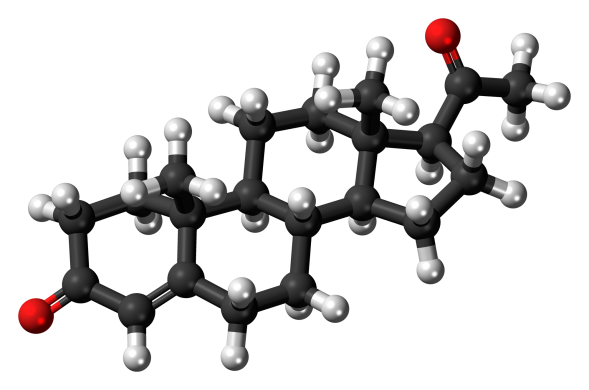
Progesterone is abbreviated as P4 in general and is also known as pregn-4-ene-3,20-dione. Progesterone is consisted of four interconnected cyclic hydrocarbons, which is an organic compound consisting entirely of hydrogen and carbon and contains ketone and oxygenated functional groups, as well as two methyl branches like other steroids. Progesterone is a kind of hydrophobic chemical compound like all steroid hormones.
Scientists at Creative Proteomics utilize a highly quantitative method with high-performance liquid chromatography (HPLC) for the determination of Progesterone levels in various samples, including Serum, Tissue and more. High-Performance Liquid Chromatography (HPLC) with UV detection is used for the determination of Progesterone (288 nm) levels in a lot of biological samples. This Methodology provides accurate, reliable, and reproducible results of Progesterone measurement, which enables us to analyze of Progesterone levels in vitro and in vivo.
Progesterone can act as a potent agonist of the nuclear Progesterone receptor (nPR) with an affinity of KD = 1 nM, therefore, it is the most important progestogen in the body. Progesterone is an endogenous steroid and progestogen sex hormone and is involved in the emenstrual cycle, pregnancy, and embryogenesis of humans and other species. Progesterone belongs to a family of steroid hormones called the progestogens, which is the most important progestogen in the body. Progesterone is also an important metabolic intermediate in the production of other endogenous steroids, such as the sex hormones and the corticosteroids. In addition, Progesterone plays a crucial role in brain function as a neurosteroid, which is kind of endogenous or exogenous steroids that rapidly alter neuronal excitability through interaction with ligand-gated ion channels and other cell surface receptors. Progesterone is on n the WHO Model List of Essential Medicines and is the most important medications needed in a basic health system.
The Russian-Polish botanist M. Tswett is generally recognized as the first person to establish the principles of chromatography. In a paper he presented in 1906, Tswett described how he filled a glass tube with chalk powder (CaCO3) and, by allowing an ether solution of chlorophyll to flow through the chalk, separated the chlorophyll into layers of different colors. He called this technique “chromatography”. Fundamentally, chromatography is a technique used to separate the components contained in a sample. High Performance Liquid Chromatography (HPLC) is a method able to separate non-volatile, thermally unstable, and polar components separate or in a mixture. HPLC is a type of chromatography that, because of its wide application range and quantitative accuracy, is regarded as an indispensable analytical technique, particularly in the field of organic chemistry. It is also widely used as a preparation technique for the isolation and purification of target components contained in mixtures.
Progesterone Analysis Service at Creative Proteomics supports your research in Progesterone Analysis. HPLC Based Analysis Service Platform enable us at Creative Proteomics offers you a state-of-the-art Analysis Service.
Sample Type
Various Sample Type
Method
High-Performance Liquid Chromatography (HPLC) with UV detection is used for the determination of Progesterone (288 nm) levels in a lot of biological samples. This Methodology provides accurate, reliable, and reproducible results of Progesterone measurement, which enables us to analyze of Progesterone levels in vitro and in vivo.
Send us your samples, you will get all information that you need!







